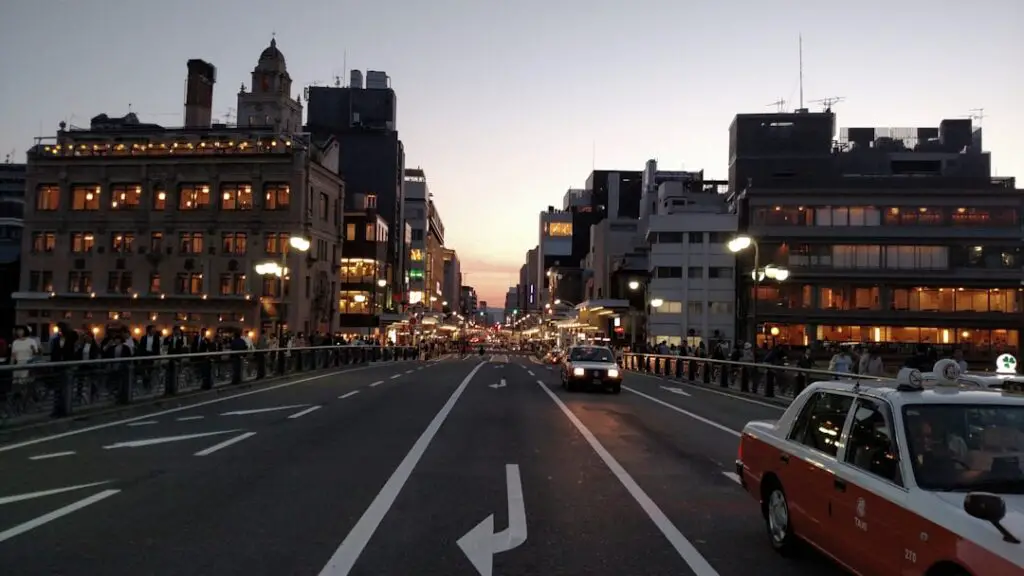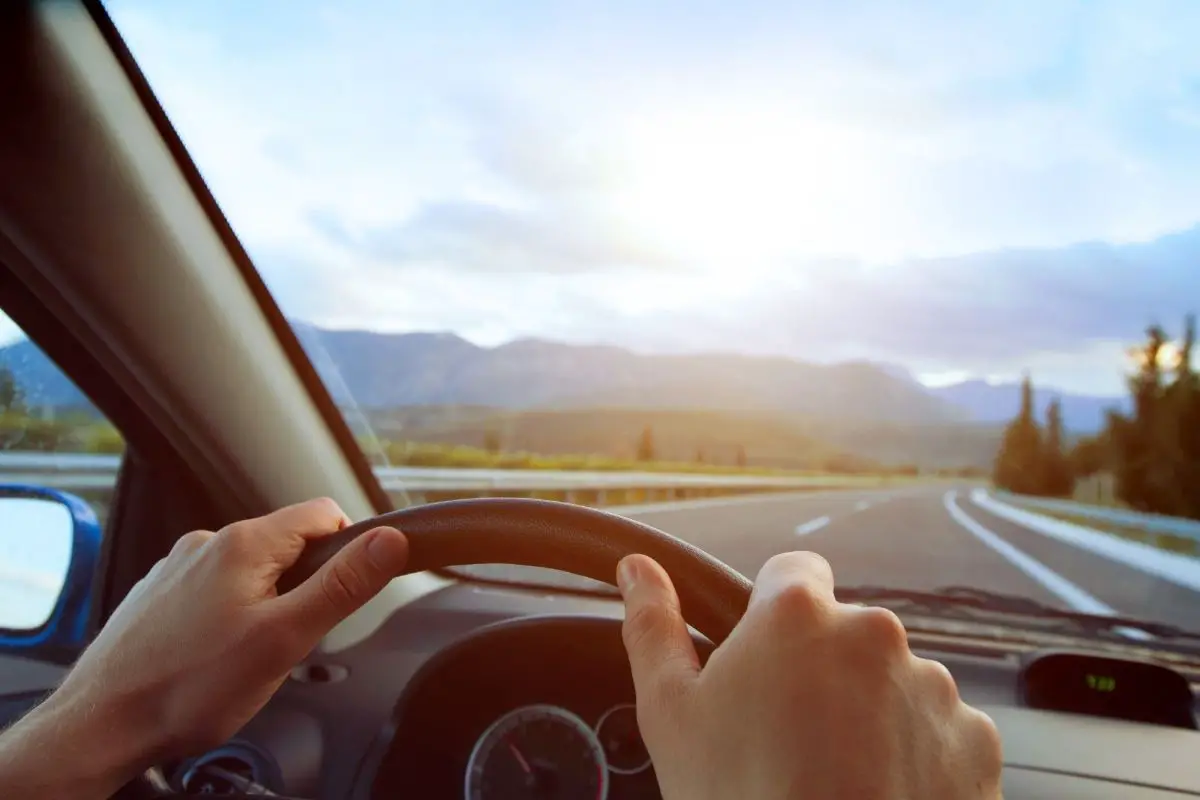Exploring Japan is a thrilling adventure for any traveler. But driving there? That adds a whole new layer of excitement. It can be challenging, but don’t worry – this guide has got you covered.
Japan has its own set of traffic laws, and understanding them will keep you safe and ticket-free. From speed limits to driving permits, we have all the essentials laid out for you.
Whether you’re up for a peaceful countryside drive or an urban escapade, being prepared will improve your experience. So buckle up! Let’s make driving in Japan easy and stress-free.
Getting Started with Driving in Japan
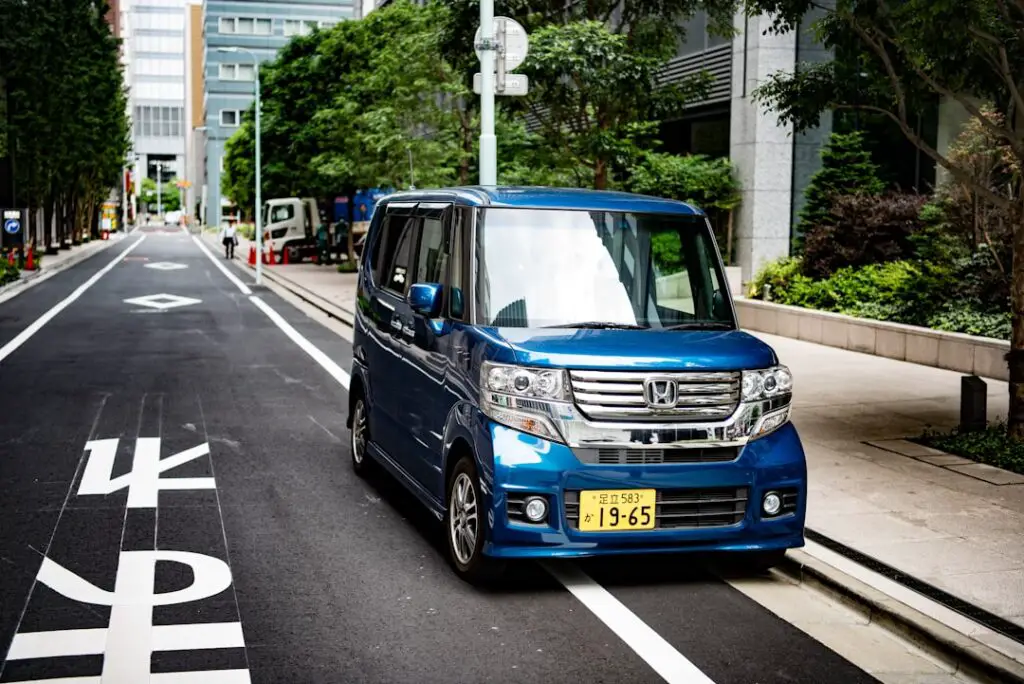
To get behind the wheel in Japan, you’ll need an International Driving Permit (IDP) or a Japanese driver’s license.
Then you have to get a vehicle. No matter if you prefer small cars or sports models, renting in Japan is rather straightforward, but understanding the local driving rules is essential to avoid issues and fines.
International Driving Permit (IDP)
One of the first things you’ll need for driving in Japan is an International Driving Permit (IDP). This essential document allows you to operate a vehicle in Japan legally and guarantees you understand the local traffic rules.
As a foreigner, driving permits not recognized in Japan can lead to serious consequences, including fines and more serious legal issues. To avoid this, you’ll need to obtain the IDP before arriving in the Land of the Rising Sun.
To get your IDP, follow these steps:
- Get your application for an IDP in your home country. Most countries have designated automobile associations where you can submit your application.
- Prepare necessary documents, typically including your valid driver’s license, passport-sized photos, and a completed application form.
- Pay the required fee, which varies by country but is generally affordable. For example, the cost of an IDP permit is barely $20.
- Wait until your request is processed, which can take anywhere from a few days to a couple of weeks.
Once you have your IDP, you can confidently navigate Japan’s roads. Still, you have to remember that traffic rules in Japan differ from those in your country, so it’s important to stay informed and drive safely.
Japanese Driver’s License
Having your IDP is a great start, but if you plan to stay in Japan for an extended period, you’ll need to convert your foreign driver’s license to a Japanese one. This process, known as ‘gaitai menkyo’, guarantees you meet local driving standards.
First, you’ll need to gather essential documents:
- your valid foreign driver’s license,
- a Japanese translation of it (usually obtained from JAF),
- your IDP and passport,
- a residence card
Once you have all of those, pay a visit to the Driver’s License Center for an eye test and document verification. Depending on your home country, you might be required to take written and practical driving tests.
US tourists should know that citizens of certain states are exempt from having to take said exams. This includes Colorado, Hawaii, Maryland, Ohio, Oregon, Virginia and Washington.
Driving tests in Japan are known for their rigor. The written test is usually available in English and covers basic road signs and rules. The practical test requires precise driving skills, so some preparation or even a few lessons might be beneficial.
Your Japanese driver’s license is valid for up to three years and is aligned with your residence status. The renewal process is straightforward but must be done before the expiration date to avoid legal complications. Stay on top of renewals to maintain the freedom of driving in Japan.
What About Car Rental in Japan?
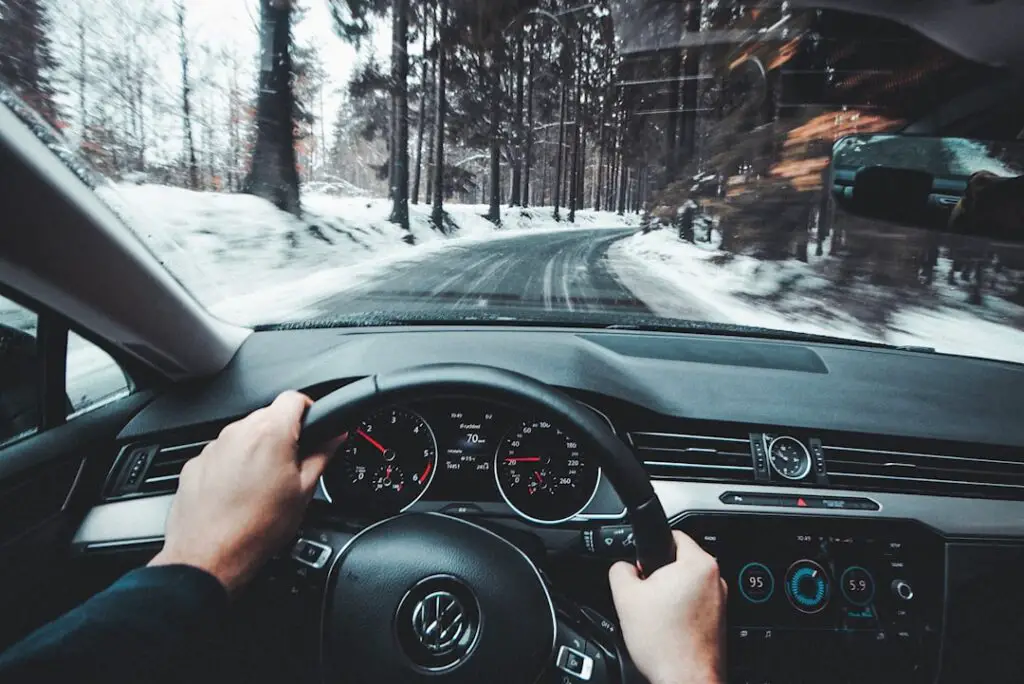
Renting a car in Japan is a convenient way to explore the country’s scenic routes and hidden gems at your own pace. Once you have your IDP or Japanese license, you shouldn’t have too much trouble getting a rental vehicle.
However, there are still some things to take into account:
- Eligibility and requirements differ between rental companies. Besides the IDP or Japanese driver’s license, some may also ask for your passport.
- When in doubt, go with proven options. Major companies like Toyota Rent a Car, Nippon Rent-A-Car, and Times Car Rental offer reliable services. Booking in advance can save you time and money.
- Rental costs vary depending on the vehicle type and rental duration. Payment is typically made by credit card, and some companies might require a deposit.
- Before signing, read the rental agreement carefully. It will cover insurance, fuel policy, and any additional fees.
What Are the Basic Traffic Rules in Japan?

Driving in Japan has its own special rhythm. Here, cars stay on the left side of the road. It’s a bit different, but you’ll get used to it quickly.
Speed limits matter. In cities, you usually can’t go faster than 40 km/h. On highways, feel free to speed up a bit, but no more than 100 km/h.
And don’t forget the basics! Buckle up every time you hit the road. Plus, keep your phone out of reach while driving. These simple rules keep everyone safe and sound.
The Vehicles Drive on the Left Side
You’ll quickly notice that in Japan, vehicles drive on the left side of the road. Unless you are from the UK, this can be quite an adjustment for many foreign drivers.
- Before you get behind the wheel, absolutely familiarize yourself with Japan’s traffic rules. They’re strict and enforced to guarantee safety. Speed limits, seat belt usage, and no drinking and driving are heavily regulated.
- Japanese road signs might look different, but they usually include pictograms and English translations. Pay close attention to these signs and traffic lights as they guide you through Japan’s well-organized roadways.
- Roads in Japan are generally well-maintained but can be much narrower than in the US, especially in urban areas. Stay cautious and be prepared for cyclists and pedestrians who share these spaces.
Most Common Speed Limits
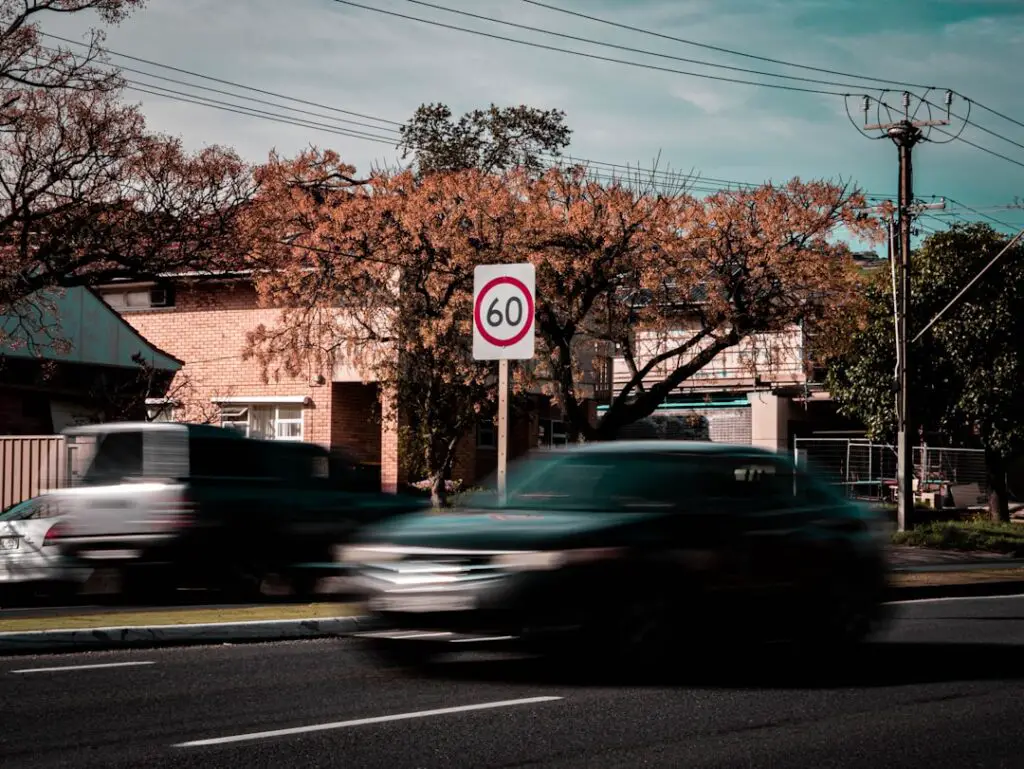
Getting around Japan’s roads means following specific speed limits to guarantee safety and compliance with local laws.
Here’s a quick rundown of the most common speed limits you’ll encounter while driving in Japan.
| Road Type | Speed Limit (km/h) |
| Urban areas | 30-40 |
| Residential zones | 30 |
| Rural roads | 50-60 |
| Expressways | Up to 100 |
| School zones | 30 |
The speed limits might seem strict, but they’re designed to protect everyone on the road. Urban areas usually have a lower maximum speed due to higher pedestrian traffic.
Residential zones are even more restricted, often capped at 30 km/h to ensure the safety of children and local people. The same applies to school zones throughout the country.
Rural roads generally allow a maximum of 50-60 km/h, providing a bit more freedom but still maintaining caution. On highways, you can drive at speeds up to 100 km/h, offering a faster way to travel long distances.
Seat Belt Laws
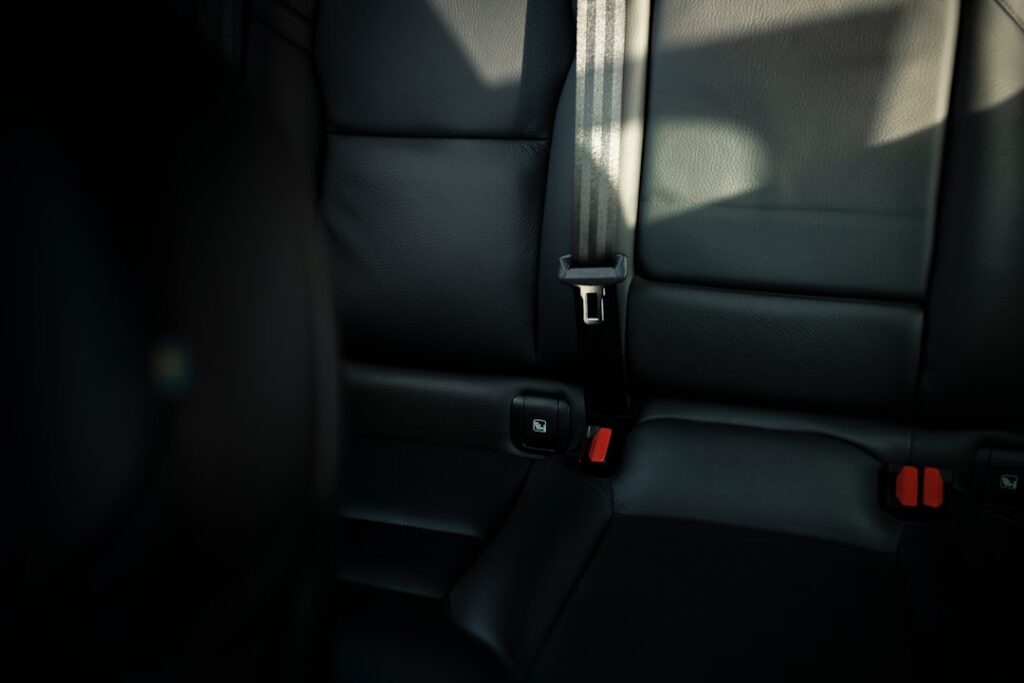
In Japan, wearing seat belts is mandatory for all passengers in the vehicle, regardless of where they’re seated. This rule is non-negotiable and applies to both front and rear seats.
Here are the key points to remember:
- Front Seat Passengers: Both the driver and the front seat passenger must wear seat belts at all times.
- Rear Seat Passengers: All passengers in the rear seats are also required to wear seat belts.
- Child Safety: Children under six years old must be secured in an appropriate child safety seat.
Use of Mobile Phones While Driving
Japan’s traffic regulations are clear: any use of mobile phones that distracts you from the road is illegal. Even holding your phone while driving can get you pulled over. Authorities are vigilant, and enforcement is rigorous, making it important for you to adhere to these rules.
Engaging in activities like texting or calling without a hands-free device not only risks your safety but also attracts hefty fines and possible license suspension.
Driving in Japan demands your full attention, especially given the unique road signs and driving customs you might not be familiar with.
For your own safety and that of others, invest in a hands-free device if you must use your phone.
Japanese Road Etiquette and Customs
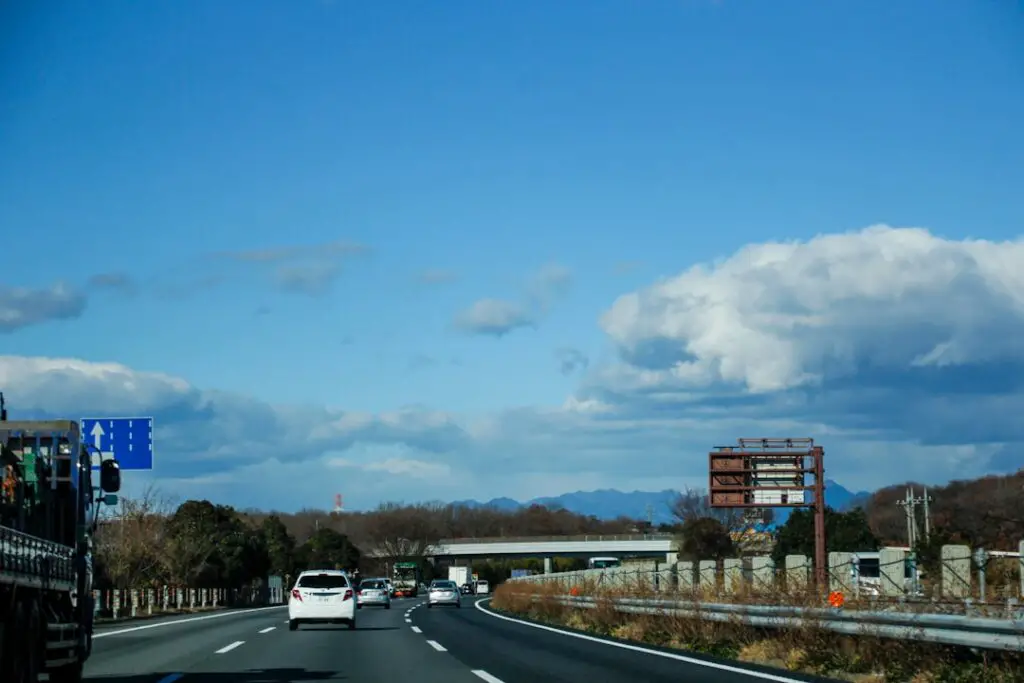
Driving in Japan is more than just following rules; it’s also about respecting road etiquette and understanding local customs.
These subtle yet important aspects will make your driving experience smoother and more enjoyable.
Overview of the Highway System
The highway system in Japan is carefully maintained, offering smooth road conditions that make driving in Japan a breeze – even with the 100km/h limit.
When you rent a car, car rental companies often equip vehicles with advanced navigation systems, ensuring you can follow even the most intricate routes with ease.
To paint a clearer picture, imagine:
- Pristine Roadways: Highways are exceptionally well-maintained and free from potholes and debris.
- Advanced Signage: Clear and abundant signs, often in both Japanese and English, guide you effortlessly. They are designed for safety and efficiency, with well-marked lanes and systematic toll booths.
- Convenient Service Areas: Regularly spaced service areas provide restrooms, restaurants, and fuel stations.
- Scenic Views: Driving through Japan’s highways offers breathtaking views of mountains, coastlines, and countryside.
The drivers there are courteous, rarely honking and always signaling their intentions.
Traveling with a vehicle in Japan offers freedom unlike any other, supported by the combination of modern road systems with a profound cultural respect for order.
Useful Tips For Driving in Urban Areas
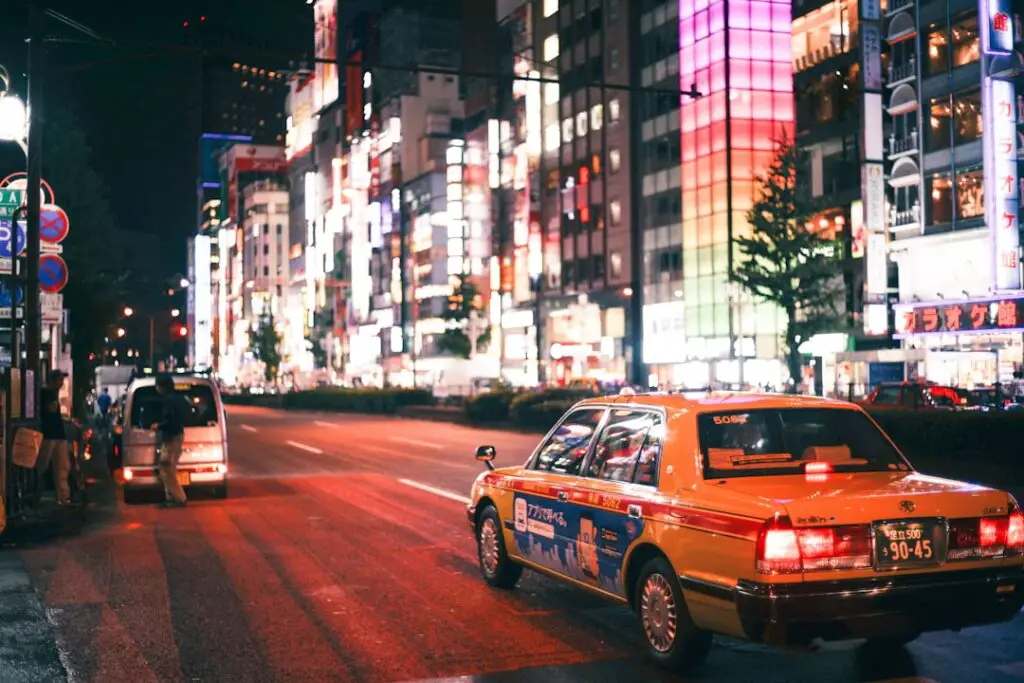
While Japan’s highways offer a serene driving experience, maneuvering through urban areas requires a keen understanding of local road etiquette and customs.
In the bustling heart of urban Japan, you’ll find drivers who follow the rules and show respect. They always use their indicators and watch out for pedestrians. Here, passersby rule at crosswalks.
Finding a place to leave your car can be tricky, but don’t worry. Japan’s parking lots are top-notch. Many are automated and well-organized. Just learn how to use them to avoid headaches.
Traffic lights in Japan are unique, too. While green still means go, cyclists and scooters weave through the streets like magic. It might seem scary and make you want to honk, but try to avoid doing that too much. It’s seen as rude, so save it for real emergencies.
As mentioned above, don’t forget your driving license and vehicle papers. Police checks happen often. Having your documents ready will keep your journey smooth and stress-free. Enjoy the ride!
Seasonal Road Conditions to Consider
As you plan your journey through Japan, it’s important to take into account the country’s seasonal road conditions to guarantee a safe and smooth trip.
Driving in Japan presents unique challenges for foreign drivers, especially when weather conditions vary drastically across seasons. Understanding these variations is essential for road safety.
Here’s a quick guide to help you visualize:
- Winter (December to February) is ruled by snow and ice, especially in northern regions.
- Spring (March to May) is usually dominated by heavy rains, which cause slick roads and reduced visibility.
- Summer (June to August) often results in hot, humid conditions, leading to slick roads and potential engine overheating.
- Autumn (September to November) is full of falling leaves that create slippery road surfaces.
How to Manage Language Barriers When Driving?

Getting around Japan’s roads can be overwhelming if you don’t speak the language, but there are effective strategies to overcome this challenge. Language barriers don’t have to hold you back.
It’s a good idea to have some communication tools like translation tools on hand. Apps such as Google Translate can scan Japanese text and provide instant translations, assisting with road signs and directions. They can also help you understand foreign language phrases that are important for driving, like ‘speed limit’ or ‘no parking.’
You should also familiarize yourself with key Japanese driving phrases before you hit the road. Knowing terms like ‘kōsoku dōro’ (highway) and ‘kokaidō’ (public road) can be invaluable. Carry a printed list or use a language assistance app for quick reference.
For real-time help, consider using GPS navigation systems that offer language options. Many rental cars in Japan are equipped with these, and fortunately, they can often be switched to English.
Finally, don’t hesitate to ask locals for help. While not everyone speaks English, many Japanese people are friendly and willing to assist you. A simple ‘sumimasen’ (excuse me) followed by showing your query on a translation app can make communication smoother.
How To Handle an Emergency on the Road?
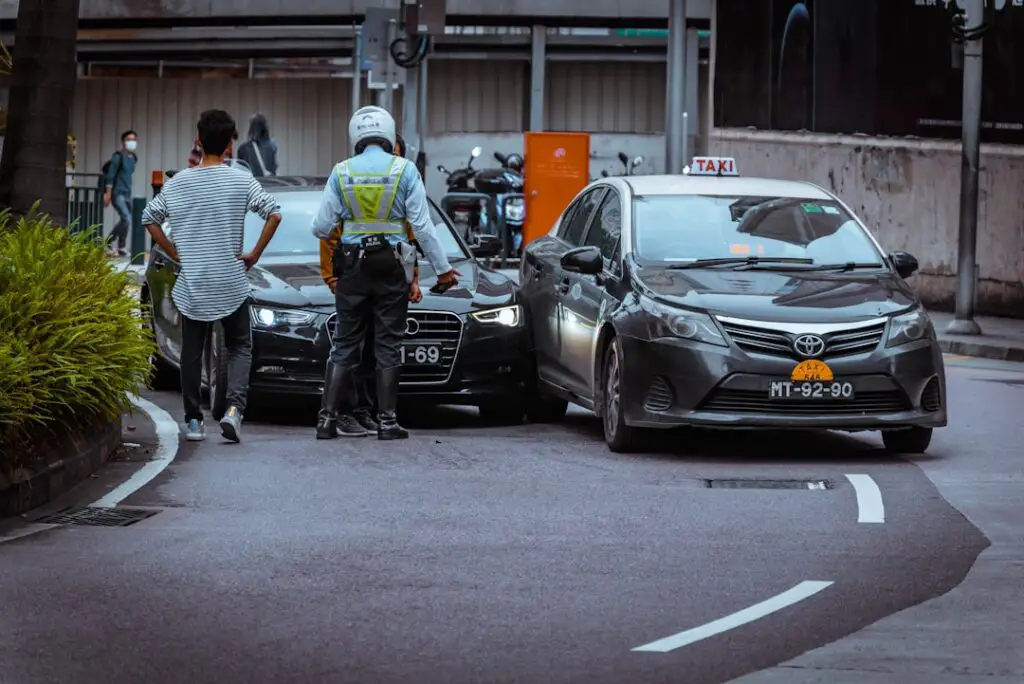
In the event of an accident on the road, knowing the critical steps to take can make all the difference. Whether you’re dealing with car breakdowns or accidents, staying calm and informed is essential.
Here’s a concise guide to handling emergencies in Japan:
- Move your vehicle to the side of the road, away from traffic. Turn on hazard lights to alert other drivers.
- Dial 110 for the Japanese police if you need immediate assistance or 119 for fire and medical emergencies.
- If you’re a member of a roadside assistance service, call them for help. Services like JAF (Japan Automobile Federation) are reliable and proven, so choosing them is highly recommended.
- Unless it’s unsafe, stay inside your car while waiting for help. Keep your seatbelt fastened and doors locked.
Handling emergencies efficiently can ensure your safety and that of others. Remember, Japan’s emergency services are well-trained and responsive.
What About Fuel and Charging Stations?
When it comes to fueling your car, you’ll find an abundance of gas stations throughout the country – especially in urban areas and along major highways.
These stations typically offer three types of fuel: regular gasoline, high-octane gasoline, and diesel. Make sure you know the type of fuel your rental car requires to avoid any mishaps.
For those driving electric vehicles, Japan is well-equipped with over 40,000 EV charging locations. You’ll find these charging points in urban centers, shopping malls, and even at some convenience stores. The infrastructure is designed to support both local and foreign drivers, making it easy to keep your EV topped up and ready for the road.
Getting a Japanese IC card, such as the ETC (Electronic Toll Collection), can further simplify your travels. This card not only speeds up toll payments but can also be used at some fuel and charging stations, making the entire journey simpler.
Most Popular Road Trip Routes to Experience
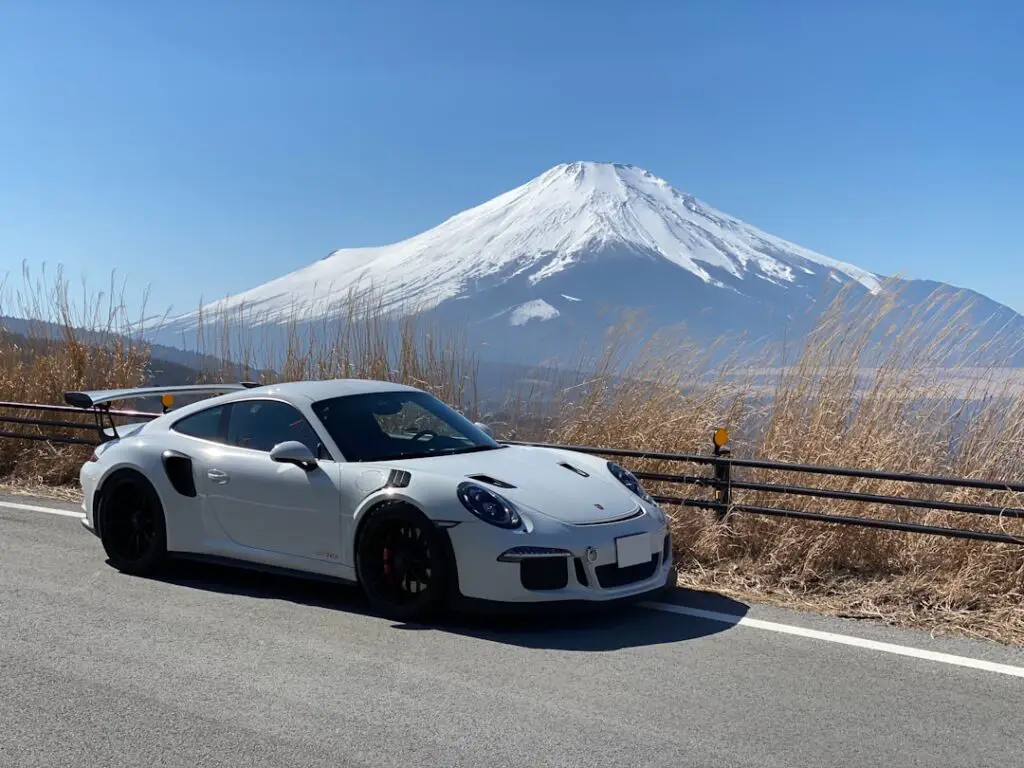
Driving through Japan is an invigorating way to immerse yourself in its diverse landscapes and rich culture. From coastal highways cutting through lush mountain ranges to serene countryside roads, the options for road trips are plentiful.
Let’s take a closer look at some of the most popular road trip routes you shouldn’t miss:
- Shimanami Kaido is a 60-kilometer route that connects Japan’s main island, Honshu, with Shikoku, featuring breathtaking views of the Seto Inland Sea. You’ll travel across several islands, each with its own charm and cultural spots.
- Hokkaido is well known for its rolling hills, flower fields, and serene lakes. The Biei and Furano areas are especially popular for their stunning seasonal landscapes.
- Noto Peninsula (Ishikawa Prefecture) is a lesser-known gem, full of traditional fishing villages, rugged coastlines, and historical temples. It’s a perfect blend of natural beauty and cultural heritage.
- Kyushu’s Yamanami highway takes you through the volcanic landscapes of Aso-Kuju National Park and hot spring towns like Beppu and Yufuin. It’s an ideal path for those looking to combine adventure with relaxation.
Conclusion
Driving in Japan offers an unparalleled way to explore the country’s fascinating blend of tradition and modernity. From the hustle and bustle of Tokyo’s neon-lit streets to the serene countryside dotted with ancient temples, every journey promises new sights and experiences.
By arming yourself with the right knowledge – like securing your IDP, understanding local traffic rules, and embracing road etiquette – you’ll navigate these roads with confidence and ease.
So, buckle up and get ready for an unforgettable adventure on Japan’s enchanting roads. The Land of the Rising Sun awaits!
Frequently Asked Questions
Can I rent a car with an international driver’s license?
You can rent a car in Japan with an international driver’s license. It’s important to have your International Driving Permit (IDP) along with your home country’s license. Most rental agencies accept these documents without issue.
Just make sure your IDP follows the 1949 Geneva Convention, as Japan recognizes this format. This freedom to drive lets you explore Japan at your own pace, making your travel experience truly personalized.
What are the toll fees on Japanese highways?
Toll fees on Japanese highways can vary depending on the distance and the specific route. Generally, you’ll pay around 25 to 30 yen per kilometer.
Expressways often have higher fees but offer faster travel times. You can use ETC (Electronic Toll Collection) cards for seamless payments.
Planning your budget? Make sure to factor in these tolls to avoid surprises and enjoy a smooth journey across Japan.
Are there any driving restrictions in major cities like Tokyo or Osaka?
Major cities like Tokyo and Osaka have specific zones where only certain types of vehicles are allowed, and some areas have time-based restrictions.
Additionally, parking can be limited, and you might need to navigate through narrow streets. Always verify local regulations before driving to avoid fines and guarantee a smooth experience while exploring these vibrant urban areas.
Is winter driving equipment necessary in certain regions?
Winter driving equipment is essential in certain regions of Japan. If you’re planning to drive in areas like Hokkaido or the Japanese Alps, you’ll need snow tires or chains.
These regions experience heavy snowfall and icy conditions, making proper equipment important for safety. Don’t underestimate the weather – prepare adequately to guarantee a smooth and enjoyable journey through Japan’s beautiful winter landscapes.

